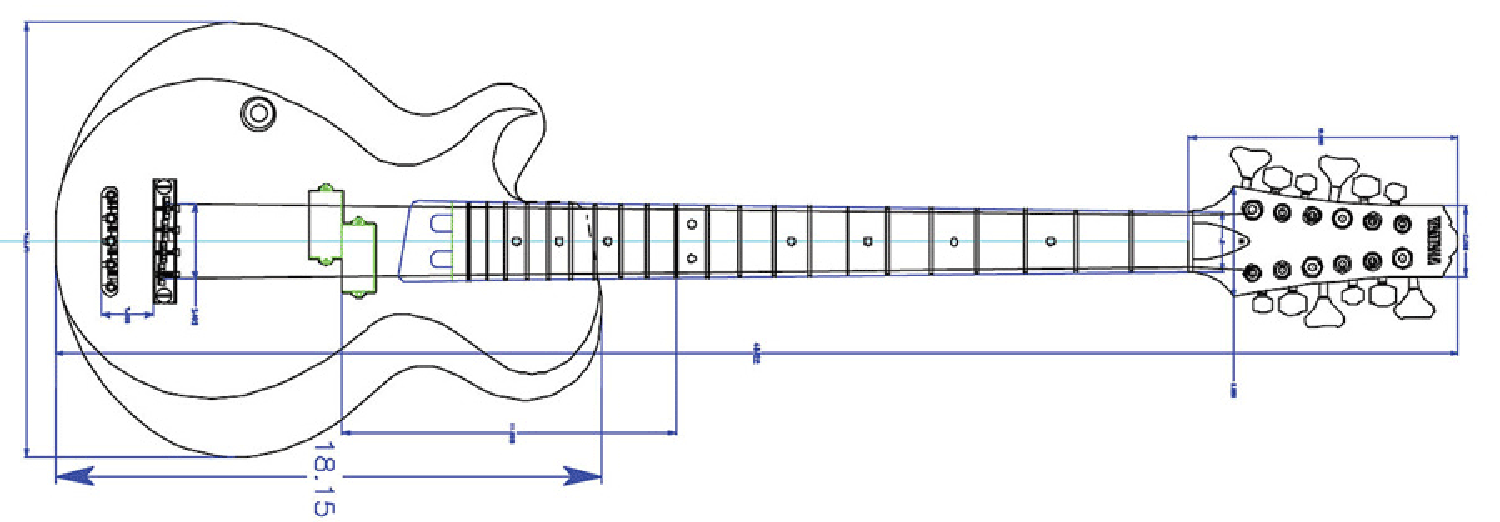Setting the Action on a 12-String Bass
Advice from Paul Chandler
We asked: When you set a Royale up how low can you get the action and do you allow any amount of fret buzz? I know some fret buzz disappears when the 12 is played through an amp, so is some buzz okay? My thinking is that since the strings rattle against each other when the instrument is played hard a little fret buzz would be acceptable. What do you think?
Here is what I would do:
1. Tune the guitar to your regular playing tuning;
2. Capo the strings at the first fret;
3. While holding the strings against the fingerboard at the 22nd (or last) fret with your left hand, check the gap between the strings and the 7th fret using a feeler gauge in your right hand. You should have clearance of .013 to .015 inch. If the strings are touching the fret in this clamped position or if the gap is too small for the feeler gauge to slip easily between the strings & fret, loosen the truss rod. If the gap is too big, tighten the truss rod until the gauge just slips between strings & fret;
4. For slinky action, adjust the bridge height on the body so that the strings are about 3/32 inch above the last fret. For stiffer action, go to about 1/8 inch;
5. Also, the nut should be slotted so that you can slip the .016 inch feeler gauge between the strings and the first fret. Lower will cause buzz and temperamental action, higher will cause stiff feel and the strings will bend out of tune when playing on the first fret.
Thanks again for your interest in our company. I especially enjoy the "Unofficial History of the 12-String Bass" section of your website.
Best regards,
PC
Truss Rod Adjustment
Advice from a flyer included with guitars made in Korea.
